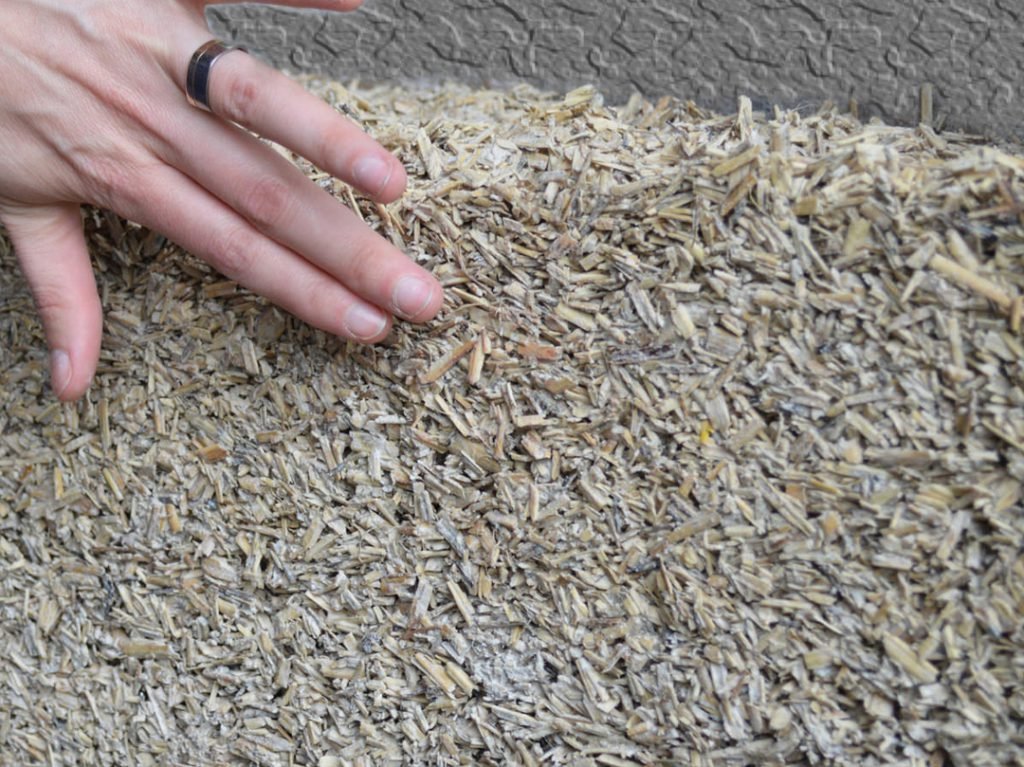This short article illustrates a few of the numerous uses of hemp for the construction of houses. The material used in the development of this house had been grown on a small piece of land over just three months.
Meanwhile, various news segments were undertaken a few years ago. Hemp construction products have developed into even more refined, and the prices have dropped too, the variety is growing, and accessibility has been improving. In case you are contemplating building a house in the near future, maybe you should consider the feasibility and sustainability of using hemp as a construction material.

Hempcrete is just a simple blend of industrial hemp (shivs), water, and a lime-based binder.
Hemp shiv is the interior core of the stem of the plant. The shivs are sliced to lengths of about 6mm to 25mm for its use in hempcrete. Hemp shivs have a very high content of silica, allowing an excellent binding property with lime.
The mixed ratio of the ingredients differs based upon its application, but generally, the ratio (in weight) is 1.5/1.5/1.5 of hemp shivs, binder, and water, respectively. The ratio is based upon the final density required according to its application.The mixture’s dry components are exhaustively mixed together so that the lime covers all of the hemp shivs, following which water is added.
Once the mix is ready, it is introduced to the form work and packed down. The final required density also decides the amount of tamping (packing down). Although the form work maybe be removed in just a few hours, the hempcrete mix may take up to a month to dry off completely, based upon the thickness of the wall.
Once the hempcrete dries, it turns out to be a lightweight but strong and resilient construction product that can be effectively used in constructing houses.

Hempcrete offers a number of benefits:
As already stated, one of the advantages of hempcrete is that it has carbon sequestration attributes. Carbon is sealed away in the hemp shivs itself, but it also continually captures carbon long after the construction process has been completed. This happens because of the process where the lime-based binder attracts and captures carbon from the air over a duration of time, petrifying the hemp shivs during its course.
A shortcoming of hempcrete is that it is not load-bearing. Hence, it ought to be used with a framework. Also, the framework must be of wood, since, the lime-based binder would react with metal. Nevertheless, the hempcrete in itself helps in protecting the wood due to its other properties.
An additional significant challenge is that industrial hemp is not legal to cultivate; therefore, the construction material must be imported, which adds to the cost and makes the whole project a bit more expensive.
When used for construction, the hempcrete is generally cast on-site. Although pre-cast bricks and hemp blocks can be sourced, they tend to be denser and do not have the same degree of hygroscopic and thermal properties.Coming to the factor of its durability, an accurately constructed hempcrete wall has the life that has to be measured in centuries.
Insulation made of industrial hemp shivs and fibers comes in an assortment of forms such as solid panels, rolls and batts.
The hemp batts contain a tiny percentage of polyethylene or polypropylene to bind the hemp in place of chemical agents. The hemp batts possess a comparable R-value to other insulation materials of identical thickness.

As in other applications of hemp in the construction process, hemp insulation does not rot. It helps control the moisture, and it is also pest resistant and is fully recyclable. Another advantage is in handling; that is, the personal protective equipment required when laying it down is minimal compared to conventional batts.
Plaster or render based on hemp is essentially the same as hempcrete, just applied in a more diluted form. It further adds a level of added sound-deadening and insulation to existing walls.

Another advantage of a hemp structure is that the plastering or rendering can be added in thicker quantity, thus producing an astonishing finishing over conventional lime.
Hemp structures and renderings can withstand the test of time meticulously. Hemp plasters have been preserving the caves in India that have been wide open to the corrosive elements of nature for 1,500 years
Hemp Textile has been used by humans to make clothes even before recorded history. It is hypothecated that hemp is one of the oldest cultivated plants in the world, and its use dates back to the stone age.

Specks of hemp fabric have been discovered dating back to around 8,000 B.C., illuminating the oldest example of human industry. Fiber imprints of hemp have been unearthed in remains of pottery in both Taiwan and China, dating back to around 10,000 years. Archeologists consider that hemp has been knitted since the Neolithic period up to the middle ages. Hemp also has a more contemporary history in several applications and has been a crucially valuable crop leading up to even the modern era.
Hemp seeds are still sprinkled on several dishes, grounded into protein powder, pressed for oil, and even made into milk. Are you afraid of the psychotropic side effects of the plant?

You should not be. While these small, dark-brown or pale-beige seeds form the edible part of the hemp plant they do not contain THC, the active drug is found in another strain of the plant that is called the cannabis and not hemp.
Since hemp regarded as a controlled substance, thus it is not legal to cultivate in India. The plant of hemp grows like a weed. Therefore, it needs little to no herbicide or pesticide, which makes buying organic even less important.
